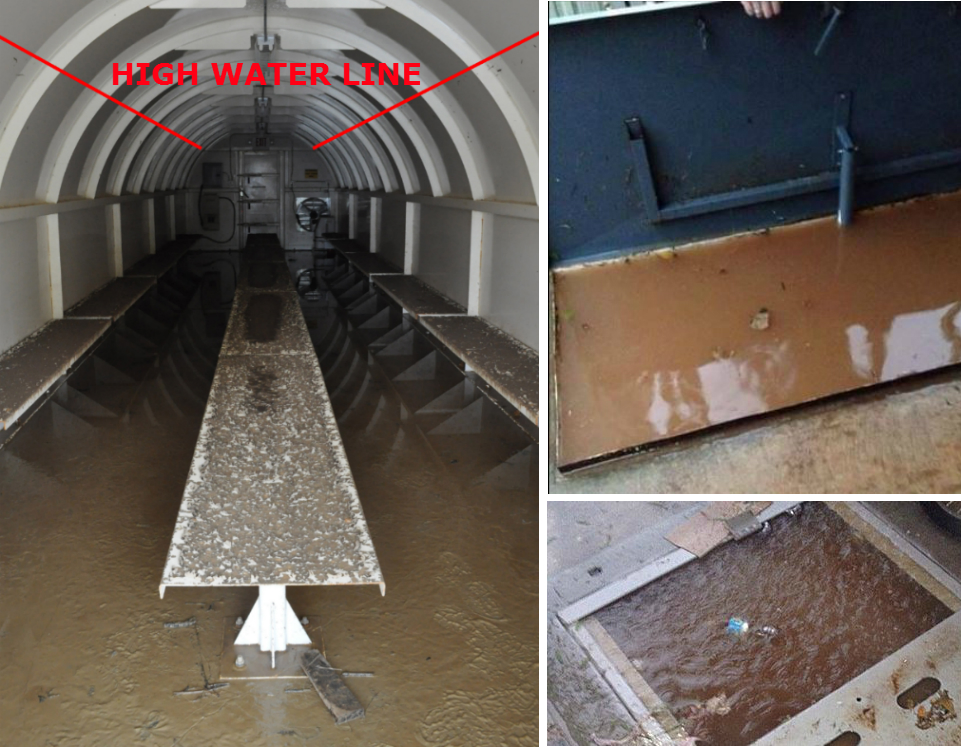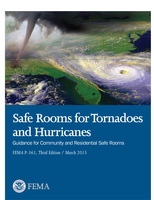I continue to be amazed at the ingenuity and creativity by people trying to create a better mouse trap especially when you have an industry that is not regulated. It brings out the “wanna-be-engineers” that sometimes quite frankly don’t have a clue!
In particular, there is a tornado shelter for residents and they are touting it for schools that is actually on wheels. Now I want you to stop and think about that for just a moment…tornado shelter on WHEELS!!! It shouldn’t take a rocket scientist to say “Wait a second, is this a shelter or a bad carnival ride?”
Now in fairness, this particular shelter is anchored to a concrete floor on one edge. It is accordion like and can be moved with a simple pull of a lever. THEN you have to install these cross bars at the hinge points, then you have to install these big drop in bolts into the floor to hold down the moveable end of the shelter. Their claim to fame is you can install one of these in every classroom and they save space! They fold up against the wall to a depth of 17” and you can put a white board on the face of it so you don’t lose wall space.
In my professional opinion, here’s the problems that I see with this shelter concept:
- Contrary to their OWN specifications directly off their own website, the shelters do not meet the FEMA P-361, or the ICC-500 and therefore will NOT meet the IBC 2015,
- No toilets (must have one that is ADA accessible)
- No hand washing facilities
- Not enough space as prescribed (per their claim, largest shelter will hold 9 not including space for portable toilet or wheelchair.)
- No fire extinguisher
- No fire separation from the host building
- Not ADA accessible
- Open space under the moveable portions of the shelter which may exceed the requirements of the 2014 ICC-500 (not yet published)
- No compliant ventilation system
- One door with no emergency escape hatch (required in current ICC-500)
- The door is out swinging therefore can be blocked by debris very easily.
- You have to keep the floor space clear in front of the shelter in order to deploy it or have to plan on taking time to rearrange furniture.
- They are directing you to bolt this down to a concrete slab that has not been engineered to resist the forces necessary, (BIG PROBLEM!)
- Bolts that one has to put into the floor after the shelter is deployed will have some type of receiver in the floor (see item 3). What if these holes over time fill with dirt/debris and one cannot get the bolt in?
- It takes up floor space (more than the 17” advertised) and is a single use shelter!
In a school situation, a classroom with 24 students and one teacher, so, conservatively, you would need a minimum of 3 of these large shelters per classroom at approximately $15,000 each or $45,000 per classroom. To protect 600 occupants would be the equivalent of 24 classrooms or a total cost of (24 x $45,000) $1,080,000, and still not meet FEMA guidelines OR code standards! In this part of the country, we can design and build a 4 classroom fully equipped shelter that does meet the requirements for that same cost!
In my opinion, these type shelters may work well in residential (single family) situations but fails once they stepped over the line into the community shelter realm. And they are not the only ones. Requirements for residential shelters are much less stringent than for community shelters. Many shelter producers just don’t understand this! So..BUYER BEWARE!!
Talk with someone that knows about shelters ESPECIALLY for a community shelter situation. It could save you in the long run!
Be careful out there!
Post by Corey Schultz, AIA, LEED AP BD+C



